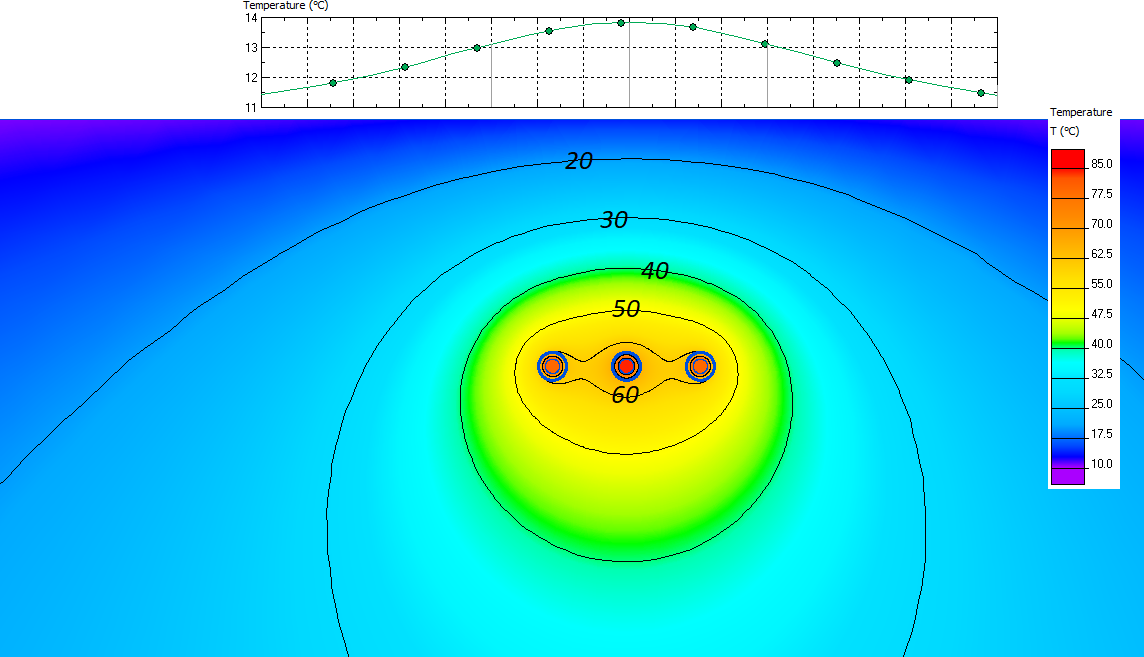Underground cable temperature
QuickField simulation example
In this example we perform the thermal analysis of the cable described in the IEC 60853-2 example F2*. The example is based on a single circuit 400 kV self-contained oil-filled cable system. The temperature distribution in the cable parts is calculated.
Problem Type
Plane-parallel problem of Heat Transfer.
Geometry
Given
Thermal resistivity of materials [K*m/W]: serving 3.5 , oil/paper 5.0, soil 1. The semiconducting screens thermal conductivity is considered to be the same as that of the dielectric, 5.0 K*m/W.
Air temperature is +10°C, convection coefficient is 10 W/K*m².
Copper losses are 30.3 W/m, dielectric losses are 13.35 W/m, sheath losses are 2.1 W/m.
Task
Calculate the conductor temperature and compare with the reference value*.
Solution
In this example there is no need to calculate losses in the dielectric and in the conductors, as the losses are specified in the input data. If you are interested in the methods of the dielectric losses calculation please refer to the Cable dielectric losses example. If you are interested in the methods of conductor losses calculation please refer to the High voltage three phase cable ampacity example.
In QuickField we specify volumetric power density [W/m³] = losses [W/m] / cross-section area [m²].
In QuickField we specify thermal conductivity [W/K*m], that is reciprocal to the thermal resistivity. Copper conductor thermal conductivity is 380 W/K*m, lead sheath thermal conductivity is 25 W/K*m.
Results
Central cable conductor temperature is 84°C. Reference value* is 85°C.
Soil surface temperature above the central cable is 14°C

Temperature distribution along the vertical axis of the cables.
References:
* IEC 60853-2, Calculation of the cyclic and emergency current rating of cables. Part 2: Cyclic rating of cables greater than 18/30 (36) kV and emergency ratings for cables of all voltages.
- Video: Underground cable temperature. Watch on YouTube
- Download simulation files (files may be viewed using any QuickField Edition).